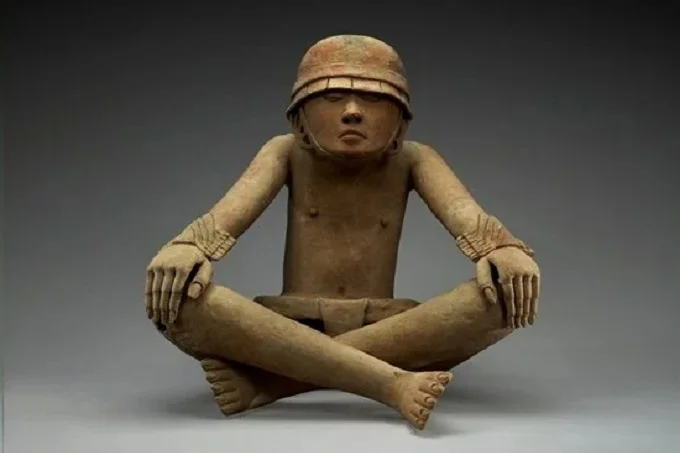Pre-Columbian America, 100 – 900 AD. The Veracruz region, located between the territory of Teotihuacan and the Mayan cities, became the birthplace of the recognizable craft and architectural style of the same name.
Hundreds of pre-Columbian settlements have been found in this area (from the Olmecs in the south to the Huastecs in the north), but the Veracruz style is characteristic of the central part of this area. The main themes of the iconography of art were the ritual ball game, human sacrifices, and pulque (a drink made from fermented agave nectar).
The classical culture of Veracruz includes many cultural traditions. The Totonac culture is sometimes considered the progenitors of the Veracruz style, but this opinion is not generally accepted. El Zapotal (600-900 AD) is an archaeological monument of the Totonac culture – one of the well-studied settlements of Veracruz.
During the excavations, ceramic sculptures of the God of Death and 13 figures of women in the form of Sihuateteo, who died in childbirth, were found. Many objects related to the ball game were also found: stone belts (Yoki), stone sculptures resembling an ax (Hacha), figured palm-shaped stone sculptures.
During excavations in Remohadas (100-800 AD, Remohadas culture), a settlement also belonging to the Veracruz culture, hollow ceramic sculptures were found, including “smiling figures”. The style of the found products is very close to the Mayan.
Many ceramic objects have also been found in Nopiola (the Nopiola culture). The stylistics of the images are also close to Mayan, but the quality of execution is much worse than the figures of Remohadas.
In El Tajin (800-1200 AD, classical culture of Veracruz), two dozen ball courts were discovered. Reliefs and drawings decorating the preserved buildings contain information about the social structure, religion, and rituals. Many patterns depict scenes of sacrifices, images of deities, ballplayers. References to Aztec mythology are often used to interpret iconography.
Despite the active research of the archaeological sites of Veracruz, there is not much information yet. Many settlements have not been studied, although they are known, among other things, “thanks” to black diggers. Active official excavations have been conducted for the most part since the 1950s. Almost nothing is known about the religion of Veracruz: many scenes, rituals, deities are interpreted according to the analogs of neighboring and later cultures.
